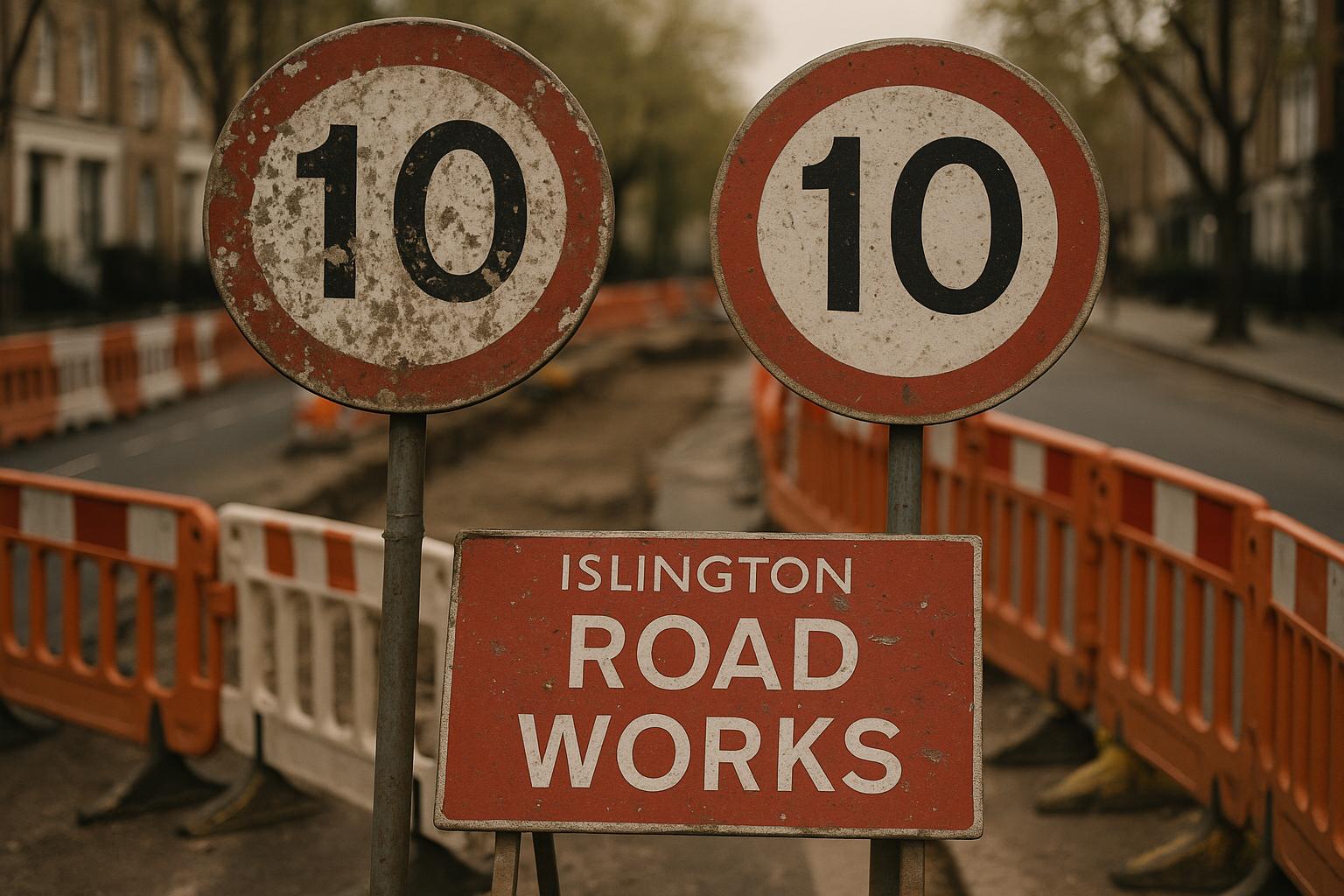Islington Council’s recent introduction of a temporary 10mph speed limit on St John Street in north London as part of ongoing roadworks has ignited a heated debate among motorists, cyclists, pedestrians, and local residents. The scheme, which is expected to last six months, aims to enhance pedestrian safety and improve infrastructure by adding new features such as a southbound cycle lane, wider pavements, seating, and trees. However, the dramatic reduction in speed has been met with widespread criticism for being impractical and potentially counterproductive.
During a visit by reporters to the area, vehicles, cyclists, and even joggers were recorded travelling well above the 10mph limit. One van was clocked at 26mph, while some cyclists reached speeds of 18mph, both surpassing the limit by significant margins. Even pedestrians who jogged past were estimated at speeds higher than the imposed limit. Drivers express frustration, noting that maintaining such a low speed is not only difficult but can cause vehicles to stall, creating traffic congestion. A seasoned minicab driver, Jahid Cahit, who has been operating for 18 years, lamented the situation, saying the restrictions and widespread use of speed bumps have already made driving challenging and costly due to repeated fines.
The opposition to the speed limit also stems from the feeling that the council’s approach is inconsistent and insufficient. Ryan, a local minicab driver, described the changes as a "half-hearted" attempt at pedestrianisation, arguing that the road is not fully pedestrianised despite foot traffic spilling onto the streets outside pubs and businesses. He suggests that either the street should be fully pedestrianised or left open for normal traffic, rather than the current state which he views as unhelpful for any group.
The council has defended the speed restriction, explaining that it is a temporary measure necessitated by the current roadworks and the accompanying narrowing of the carriageway. Councillor Rowena Champion, Executive Member for Environment, Air Quality and Transport, emphasised that the limit will be removed once the works are complete and stressed efforts to minimise disruption and maintain access for residents and businesses during this period.
However, locals fear that the limit, unusually painted directly onto the road surface instead of being indicated solely by temporary signs, may remain indefinitely. Some residents, including motorcycle enthusiast Phil Cudlipp, express concerns that the ultra-low speed is impractical and inefficient, noting that many have abandoned using their motorcycles or cars due to these restrictions and limited parking.
Safety campaigners and supporters of the council’s initiatives argue that lowering speed limits in pedestrian-heavy areas can reduce accidents and improve overall road safety. Islington Council has been recognised for its broader efforts to promote sustainable transport, including the introduction of low-traffic neighbourhoods, protected cycle lanes, and a borough-wide default 20mph limit, all intended to create safer, cleaner, and more livable streets.
Nonetheless, the current 10mph limit on St John Street stands out as an extreme measure that tests the tolerance and adaptability of road users. Driving charities have noted that such low speed limits are unusual and typically reserved only for resurfacing works lasting a few days, making this six-month restriction an exceptional case.
Islington’s experiment highlights the broader tensions between urban road safety ambitions, environmental goals, and the practical realities faced by everyday drivers, cyclists, and pedestrians navigating competing demands on London’s streets.
📌 Reference Map:
- Paragraph 1 – [1] (Daily Mail), [2] (GB News), [3] (Islington Tribune)
- Paragraph 2 – [1] (Daily Mail)
- Paragraph 3 – [1] (Daily Mail)
- Paragraph 4 – [1] (Daily Mail), [3] (Islington Tribune)
- Paragraph 5 – [1] (Daily Mail)
- Paragraph 6 – [1] (Daily Mail)
- Paragraph 7 – [3] (Islington Tribune), [5] (Cycle Islington)
- Paragraph 8 – [1] (Daily Mail), [2] (GB News), [6] (Daily Express)
Source: Noah Wire Services
